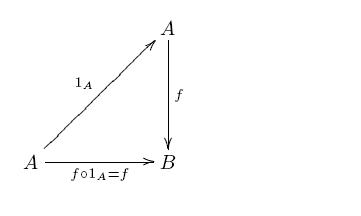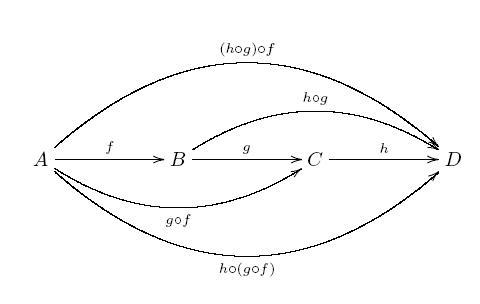I will write a series of posts as a way of gently introducing category theory to the ‘beginner’, though I will assume that the beginner will have some level of mathematical maturity. This series will be based on the the book, Conceptual Mathematics: A first introduction to categories by Lawvere and Schanuel. So, this won’t go into most of the deeper stuff that’s covered in, say, Categories for the Working Mathematician by Mac Lane. We shall deal only with sets (as our objects) and functions (as our morphisms). This means we deal only with the Category of Sets! Therefore, the reader is not expected to know about advanced stuff like groups and/or group homomorphisms, vector spaces and/or linear transformations, etc. Also, no knowledge of college level calculus is required. Only knowledge of sets and functions, some familiarity in dealing with mathematical symbols and some knowledge of elementary combinatorics are required. That’s all!
Sets, maps and composition
An object (in this category) is a finite set or collection.
A map (in this category) consists of the following:
i) a set called the domain of the map;
ii) a set called the codomain of the map; and
iii) a rule assigning to each , an element
.
We also use ‘function’, ‘transformation’, ‘operator’, ‘arrow’ and ‘morphism’ for ‘map’ depending on the context, as we shall see later.
An endomap is a map that has the same object as domain and codomain, which in this case is
.
An endomap in which for every
is called an identity map, also denoted by
.
Composition of maps is a process by which two maps are combined to yield a third map. Composition of maps is really at the heart of category theory, and this will be evident in plenty in the later posts. So, if we have two maps and
, then
is the third map obtained by composing
and
. Note that
is read ‘
following
‘.
Guess what? Those are all the ingredients we need to define our category of sets! Though we shall deal only with sets and functions, the following definition of a category of sets is actually pretty much the same as the general definition of a category.
Definition: A CATEGORY consists of the following:
(1) OBJECTS: these are usually denoted by etc.
(2) MAPS: these are usually denoted by etc.
(3) For each map , one object as DOMAIN of
and one object as CODOMAIN of
. So,
has domain
and codomain
. This is also read as ‘
is a map from
to
‘.
(4) For each object , there exists an IDENTITY MAP,
. This is also written as
.
(5) For each pair of maps and
, there exists a COMPOSITE map,
. ( ‘
following
‘.)
such that the following RULES are satisfied:
(i) (IDENTITY LAWS): If , then we have
and
.


(ii) (ASSOCIATIVE LAW): If and
, then we have
. ( ‘
following
following
‘) Note that in this case we are allowed to write
without any ambiguity.

Exercises: Suppose and
.
(1) How many maps are there from
to
?
(2) How many maps are there from
to
?
(3) How many maps are there from
to
?
(4) How many maps are there from
to
?
(5) How many maps are there from
to
satisfying
?
(This is a non-trivial exercise for the general case in which for some positive integer
.)
(6) How many maps are there from
to
satisfying
?
(7) Can you find a pair of maps and
such that
. If yes, how many pairs can you find?
(8 ) Can you find a pair of maps and
such that
. If yes, how many pairs can you find?
Bonus exercise:
How many maps are there if
is the empty set and
for some
? What if
and
is the empty set? What if both
and
are empty?

2 comments
Comments feed for this article
April 30, 2008 at 3:06 pm
Boolean algebras, Boolean rings, and baby Stone duality « Vishal Lama’s blog
[…] assuming that the reader is already familiar with, or is willing to read up on, the basic notion of category, and of functor (= structure-preserving map between categories, preserving identity morphisms and […]
June 22, 2008 at 5:12 pm
Basic category theory, I « Todd and Vishal’s blog
[…] about formal patterns of arrows and their compositions (cf. “commutative diagrams”). Vishal’s post on the notion of category had some picture displays of the categorical axioms, like associativity, […]